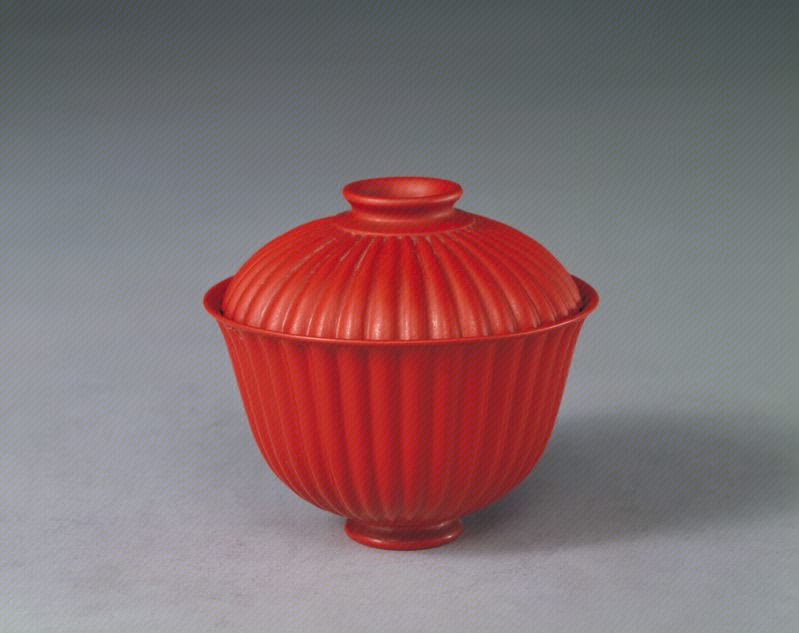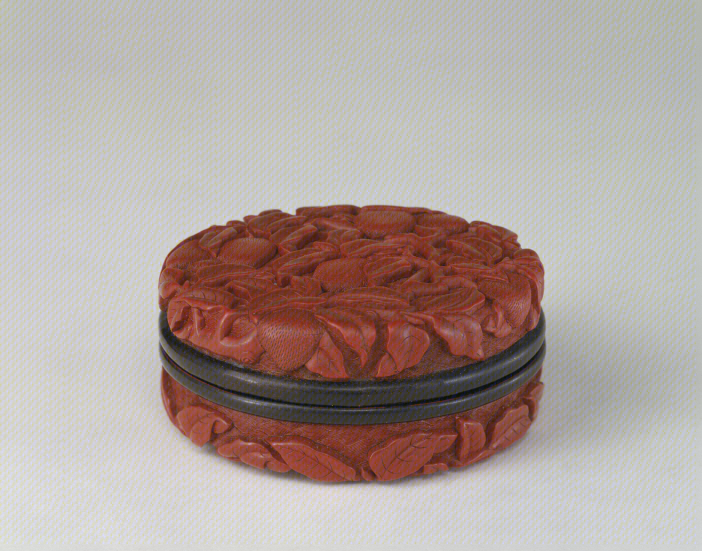
Carved Red Lacquer Box with Dragons Frolicking in the Sea Design
Period: Qianlong reign (1736–1795), Qing dynasty (1644–1911)
Dimensions: overall height: 9.6 cm, mouth diameter: 7.9 cm
This cylindrical box is fashioned in the heaven-covering-earth style (tiangaidi shi) and features a design of dragons frolicking in the sea carved into the vermillion lacquer on the sides and top. The primary motif is a design of two dragons on the top while the curved sides are carved with four dragons—all of whom are hurdling through air and sea. The underside, inside the foot, is covered in lustrous black lacquer and incised with the four-character regular (kai) script inscription “Made during the Qianlong Reign” (Qianlong nianzhi) in two columns; this reign mark is, notably, filled with gold.
Imbued with unprecedented style, the box was carved with exquisite craftsmanship—as evinced in the salient marks of the artisan’s blade—and represents the carved-lacquer style that became predominant during the Qianlong period (1736–1795). The formation of this style is attributed to two aspects; the first is influence from the unpolished unconcealed-blade technique used during the Jiajing (1522–1566) and Wanli (1573–1620) reigns in the latter period of the Ming dynasty (1368–1644). The second contributing factor is the employment of ivory carvers in the production of lacquerware. Imperial archives from the early years of the Qianlong reign document how, when the imperial lacquer workshop lacked carvers, the emperor (personal name Hongli, 1711–1799) issued orders on the fourteenth day of the tenth lunar month of the third year of his reign (1738) for a renowned bamboo carver from the South serving in the ivory workshop to be transferred to lacquer production. Consequently, the novel styles and delicate techniques of southern bamboo carving of the Qianlong period were likely incorporated into the art of lacquer carving. This influence is expressed as innovative aesthetics of sharply defined features demonstrated in the characteristics of the precise cuts of the carver’s blade. The exquisitely carved red lacquer box with the design of dragons frolicking in the sea is nearly flawless and serves as a paramount example of carved lacquer arts of the Qianlong reign.







